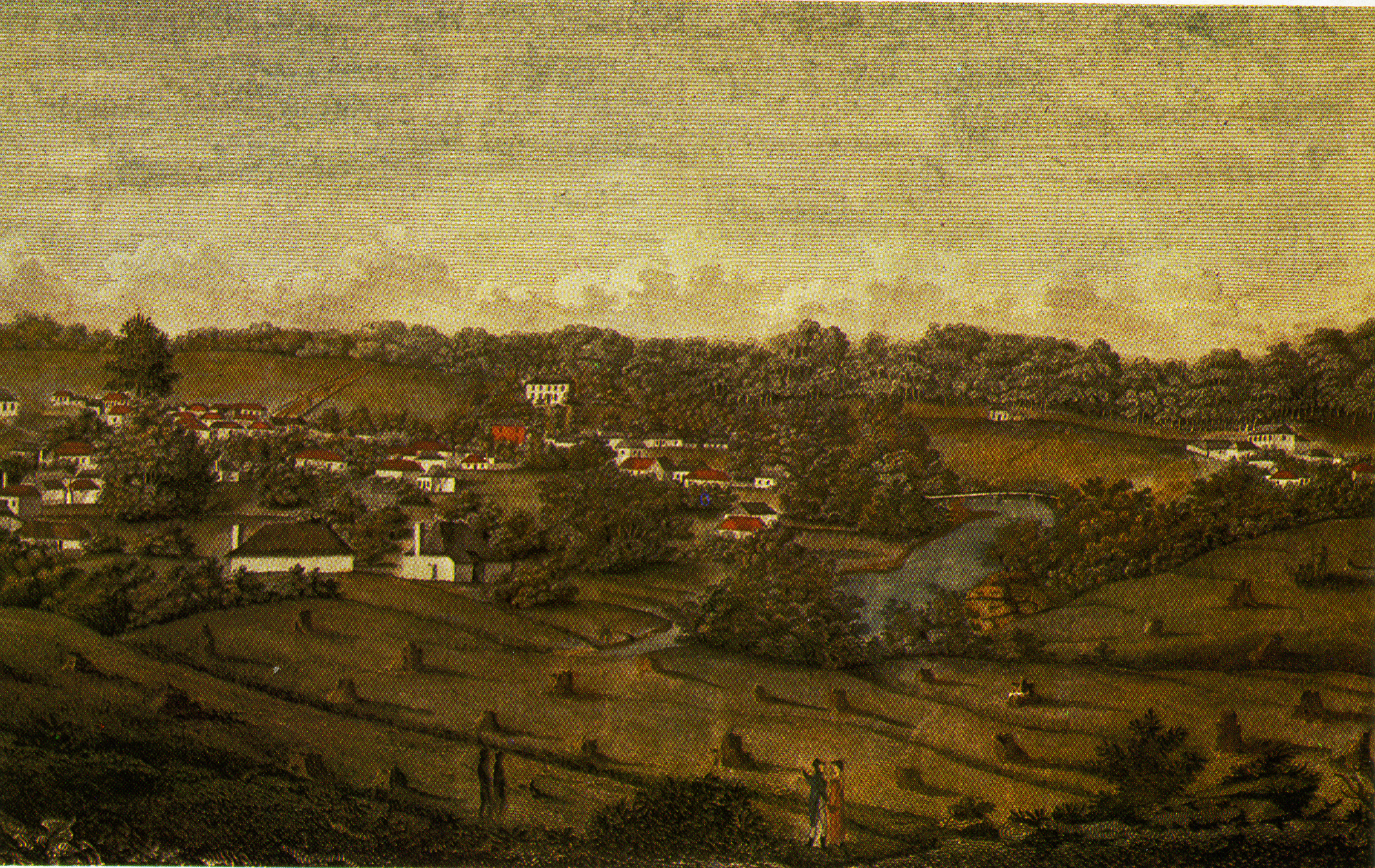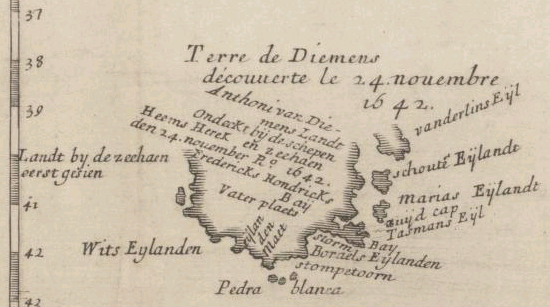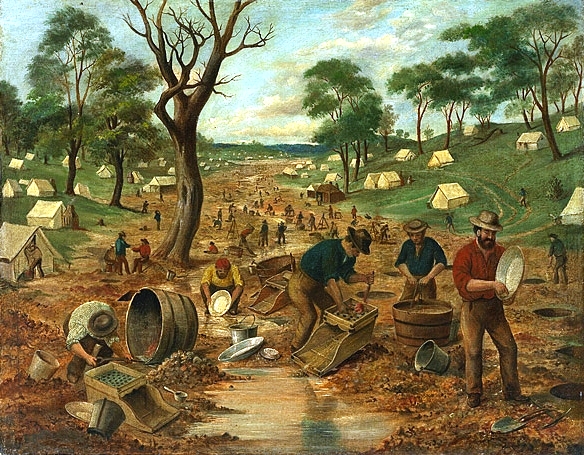|
Macarthur House
Macarthur House is a heritage-listed former residence and school building and now offices at 8 Melville Street, Parramatta, City of Parramatta, Sydney New South Wales, Australia. It was designed by James Houison (1850s house), Arthur William McKenzie Mowle (1923 wings) and David Sheedy (1981-2 works) and built from 1855 to 1856 by James Houison. It has also known as Morton House and Pemberton Grange. It was added to the New South Wales State Heritage Register on 2 April 1999. History Aboriginal and early colonial use The northern shore of the Parramatta River was originally inhabited by the Indigenous people of the Wallumedegal tribe, who spoke a dialect of the Darug language. From the initial years of colonisation the region of Parramatta was a much sought-after area due to the rich soil in the area and its promising potential for farming and growing crops. On 22 February 1791 Robert Webb, a seaman who arrived in Sydney on the "Sirius" with the First Fleet in 1788, was ... [...More Info...] [...Related Items...] OR: [Wikipedia] [Google] [Baidu] |
Parramatta, New South Wales
Parramatta () is a suburb and major commercial centre in Greater Western Sydney, located in the state of New South Wales, Australia. It is located approximately west of the Sydney central business district on the banks of the Parramatta River. Parramatta is the administrative seat of the local government area of the City of Parramatta and is often regarded as the main business district of Greater Western Sydney. Parramatta also has a long history as a second administrative centre in the Sydney metropolitan region, playing host to a number of state government departments as well as state and federal courts. It is often colloquially referred to as "Parra". Parramatta, founded as a British settlement in 1788, the same year as Sydney, is the oldest inland European settlement in Australia and is the economic centre of Greater Western Sydney. Since 2000, government agencies such as the New South Wales Police Force and Sydney Water have relocated to Parramatta from the centre of Sydn ... [...More Info...] [...Related Items...] OR: [Wikipedia] [Google] [Baidu] |
Van Diemen's Land
Van Diemen's Land was the colonial name of the island of Tasmania used by the British during the European exploration of Australia in the 19th century. A British settlement was established in Van Diemen's Land in 1803 before it became a separate colony in 1825. Its penal colonies became notorious destinations for the transportation of convicts due to the harsh environment, isolation and reputation for being inescapable. Macquarie Harbour and Port Arthur are among the most well-known penal settlements on the island. With the passing of the Australian Constitutions Act 1850, Van Diemen's Land (along with New South Wales, Queensland, South Australia, Victoria, and Western Australia) was granted responsible self-government with its own elected representative and parliament. On 1 January 1856, the colony of Van Diemen's Land was officially changed to Tasmania. The last penal settlement was closed in Tasmania in 1877. Toponym The island was named in honour of Anthony van D ... [...More Info...] [...Related Items...] OR: [Wikipedia] [Google] [Baidu] |
The King's School, Parramatta
, motto_translation = "Bravely and Faithfully" , streetaddress = 87–129 Pennant Hills Road , city = North Parramatta, Sydney , state = New South Wales , country = Australia , coordinates = , pushpin_map = Australia Sydney , pushpin_label_position = bottom , pushpin_mapsize = 250 , pushpin_map_caption = Location in greater metropolitan Sydney , type = Independent day and boarding , denomination = Anglican , established = 1831 , founder = William Grant Broughton , chairman = , headmaster = Tony George , key_people = , grades = Early learning; K-12 , grades_label = Years , gender = Male , colours = Sky blue and white , slogan = Academic excellence with character development , athletics = AAGPS , affiliations = , website ... [...More Info...] [...Related Items...] OR: [Wikipedia] [Google] [Baidu] |
National Trust Of Australia
The National Trust of Australia, officially the Australian Council of National Trusts (ACNT), is the Australian national peak body for community-based, non-government non-profit organisations committed to promoting and conserving Australia's Indigenous, natural and historic heritage. The umbrella body was incorporated in 1965, with member organisations in every state and territory of Australia. History Modelled on the National Trust for Places of Historic Interest or Natural Beauty and inspired by local campaigns to conserve native bushland and preserve old buildings, the first Australian National Trusts were formed in New South Wales in 1945, South Australia in 1955 and Victoria in 1956; followed later in Western Australia, Tasmania and Queensland. The two Territory Trusts were the last to be founded, in 1976 (see below). The driving force behind the establishment of the National Trust in Australia was Annie Forsyth Wyatt (1885–1961). She lived for much of her life ... [...More Info...] [...Related Items...] OR: [Wikipedia] [Google] [Baidu] |
Granville, New South Wales
Granville is a suburb in western Sydney, in the state of New South Wales, Australia. Granville is located west of the Sydney central business district, split between the local government areas of Cumberland City Council and the City of Parramatta. South Granville is a separate suburb. Lisgar, Redfern, Heath and Mona Streets form the approximate border between Granville and South Granville. The Duck River provides a boundary with Auburn, to the east. History In 1855, the Granville area was known as Parramatta Junction, named after the final stop of the first railway line of New South Wales. The Sydney-Parramatta Line ran from Sydney terminus, just south from today's Central railway station to the Granville area which was originally known as 'Parramatta Junction'. This led to the development of this area, which attracted speculators and some local industries. In the early days of European settlement, timber was harvested to fuel the steam engines in Sydney and Parramatt ... [...More Info...] [...Related Items...] OR: [Wikipedia] [Google] [Baidu] |
Australian Gold Rushes
During the Australian gold rushes, starting in 1851, significant numbers of workers moved from elsewhere in Australia and overseas to where gold had been discovered. Gold had been found several times before, but the colonial government of New South Wales ( Victoria did not become a separate colony until 1 July 1851) had suppressed the news out of the fear that it would reduce the workforce and so destabilise the economy. After the California Gold Rush began in 1848, many people went there from Australia, so the New South Wales government sought approval from the British Colonial Office for the exploitation of mineral resources, and offered rewards for finding gold. History of discovery The first gold rush in Australia began in May 1851 after prospector Edward Hargraves claimed to have discovered payable gold near Orange, at a site he called Ophir. Hargraves had been to the Californian goldfields and had learned new gold prospecting techniques such as panning and cradl ... [...More Info...] [...Related Items...] OR: [Wikipedia] [Google] [Baidu] |
John Campbell (Australian Politician)
John Campbell (25 July 1802 – 22 January 1886) was an Australian politician. He was a member of the New South Wales Legislative Council in 1856 and between 1861 and 1886. He was also a member of the New South Wales Legislative Assembly between 1856 and 1860. Early life Campbell was the eldest son of Sophia Palmer and Robert Campbell a pioneer Sydney merchant and member of the Legislative Council. He was also the elder brother of Robert Campbell Jr who, at various times, was a member of the Legislative Council and Assembly and Colonial Treasurer. In addition, his youngest brother Charles was a member of the Legislative Council, and his nephew William was a member of the Legislative Council and Assembly between 1868 and 1906. Campbell was educated in England between 1810 and 1820 and joined his father's business after returning to Australia. He became the sole owner of the business in 1859 and was a noted philanthropist who donated much of his fortune to the Anglican Chu ... [...More Info...] [...Related Items...] OR: [Wikipedia] [Google] [Baidu] |
Robert Campbell (Australian Politician)
Robert Campbell (5 October 1804 – 30 March 1859) was an early opponent of penal transportation and an Australian politician, Colonial Treasurer of New South Wales. He was also an elected as a member of the New South Wales Legislative Council and later, the New South Wales Legislative Assembly. Campbell was the second son of Robert Campbell and born at Campbell's Wharf, The Rocks in Sydney, Australia. In 1810, his parents sent him to Pimlico, London, England to be educated and he returned in 1819. In 1827, Campbell joined his father's company Campbell and Co. One of his first duties was in January 1828 to travel to England on company business on the barque ''Lady Blackwood'' ( John Dibbs, Master), returning to Sydney in March 1830, again on the ''Lady Blackwood''. In 1829, (in England) he became active in the anti-transportation campaign. In the early 1830s, he refused to sit on a jury that included emancipists in order to draw attention to this cause and as a result be ... [...More Info...] [...Related Items...] OR: [Wikipedia] [Google] [Baidu] |
Canberra
Canberra ( ) is the capital city of Australia. Founded following the Federation of Australia, federation of the colonies of Australia as the seat of government for the new nation, it is Australia's largest inland city and the List of cities in Australia by population, eighth-largest city overall. The city is located at the northern end of the Australian Capital Territory at the northern tip of the Australian Alps, the country's highest mountain range. As of June 2021, Canberra's estimated population was 453,558. The area chosen for the capital had been inhabited by Indigenous Australians for up to 21,000 years, with the principal group being the Ngunnawal people. European settlement commenced in the first half of the 19th century, as evidenced by surviving landmarks such as St John the Baptist Church, Reid, St John's Anglican Church and Blundells Cottage. On 1 January 1901, federation of the colonies of Australia was achieved. Following a long dispute over whether Sydney o ... [...More Info...] [...Related Items...] OR: [Wikipedia] [Google] [Baidu] |
Windsor, New South Wales
Windsor is a historic town north-west of Sydney, New South Wales, Australia. It is the council seat of the Hawkesbury local government area. The town sits on the Hawkesbury River, enveloped by farmland and Australian bush. Many of the oldest surviving European buildings in Australia are located at Windsor. It is north-west of metropolitan Sydney, on the fringes of urban sprawl. Demographics At the , Windsor had a reported population of 1,891 people, with a median age of 42. The most common ancestries in Windsor were English (30.9%), Australian (28.9%), Irish (10.3%), Scottish (7.5%), and German (2.8%). Most people from Windsor were born in Australia (78.8%), followed by England (3.3%), and New Zealand (1.5%). The most common religious group in Windsor was Christianity (65.8%), 25.2% being Catholic and 23.0% Anglican. The second largest group was No Religion (28.9%). The most common occupations in Windsor included Professionals (15.9%), Technicians and Trades W ... [...More Info...] [...Related Items...] OR: [Wikipedia] [Google] [Baidu] |
Royal Irish Regiment (1684–1922)
The Royal Irish Regiment, until 1881 the 18th Regiment of Foot, was an infantry Infantry is a military specialization which engages in ground combat on foot. Infantry generally consists of light infantry, mountain infantry, motorized infantry & mechanized infantry, airborne infantry, air assault infantry, and m ... regiment of the line in the British Army, first raised in 1684. Also known as the 18th (Royal Irish) Regiment of Foot and the 18th (The Royal Irish) Regiment of Foot, it was one of eight Irish military diaspora#'Irish' named units of the British Army, Irish regiments raised largely in Ireland, its home depot in Clonmel. It saw service for two and a half centuries before being disbanded with the Partition of Ireland following establishment of the independent Irish Free State in 1922 when the five regiments that had their traditional recruiting grounds in the counties of the new state were disbanded. History Formation to end 19th century The regiment wa ... [...More Info...] [...Related Items...] OR: [Wikipedia] [Google] [Baidu] |
Malta
Malta ( , , ), officially the Republic of Malta ( mt, Repubblika ta' Malta ), is an island country in the Mediterranean Sea. It consists of an archipelago, between Italy and Libya, and is often considered a part of Southern Europe. It lies south of Sicily (Italy), east of Tunisia, and north of Libya. The official languages are Maltese language, Maltese and English language, English, and 66% of the current Maltese population is at least conversational in the Italian language, Italian language. Malta has been inhabited since approximately 5900 BC. Its location in the centre of the Mediterranean Sea, Mediterranean has historically given it great strategic importance as a naval base, with a succession of powers having contested and ruled the islands, including the Phoenicians and Ancient Carthage, Carthaginians, Romans, Greeks, Arabs, Normans, Aragonese, Knights Hospitaller, Knights of St. John, French, and British, amongst others. With a population of about 516,000 over an ... [...More Info...] [...Related Items...] OR: [Wikipedia] [Google] [Baidu] |





